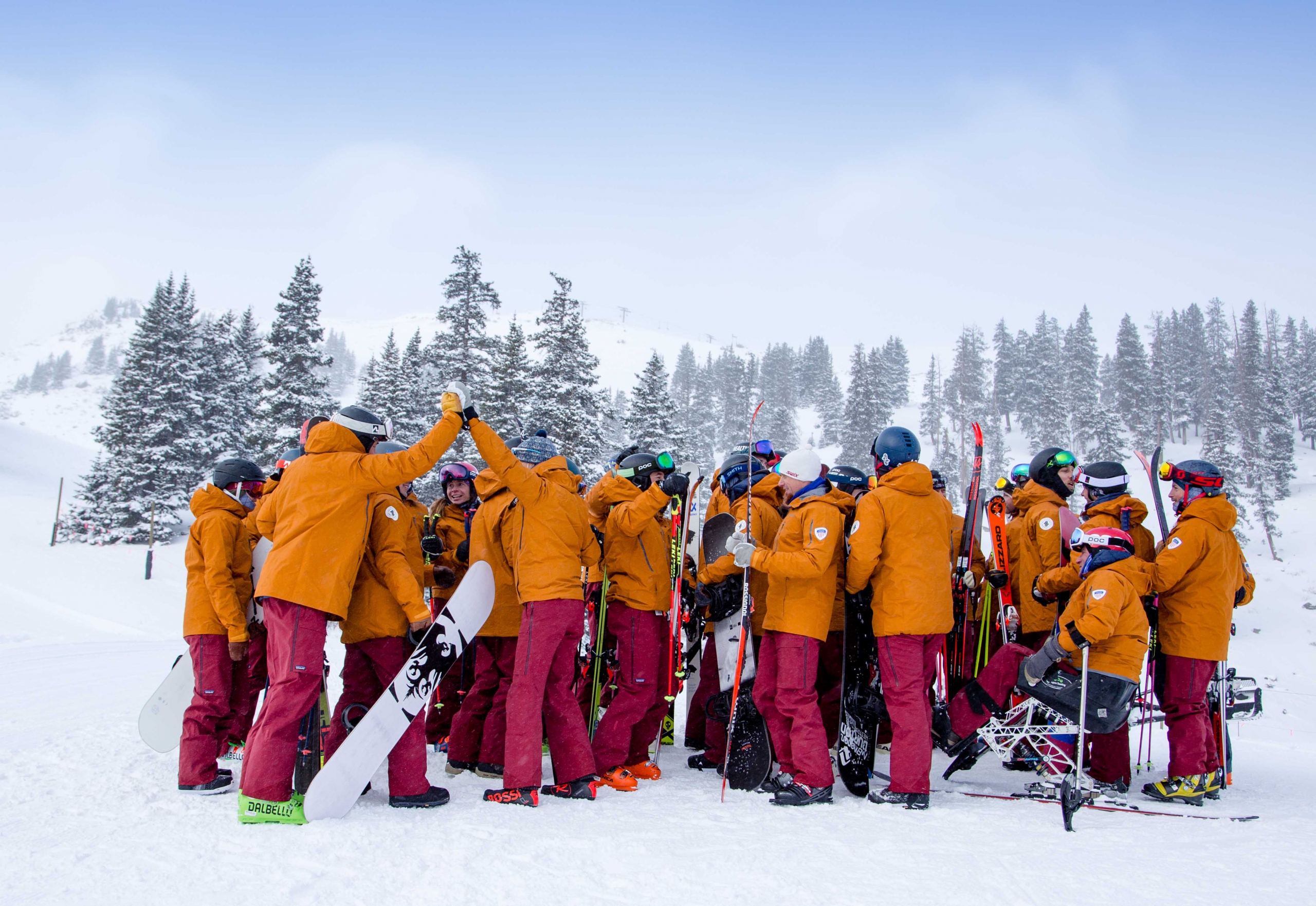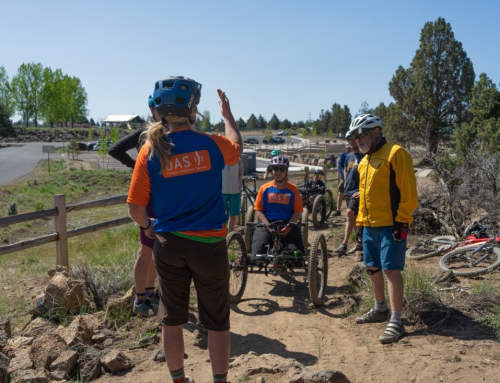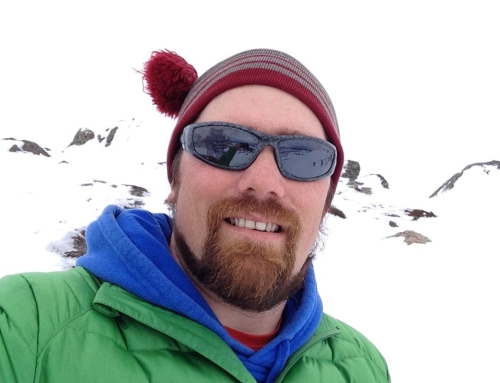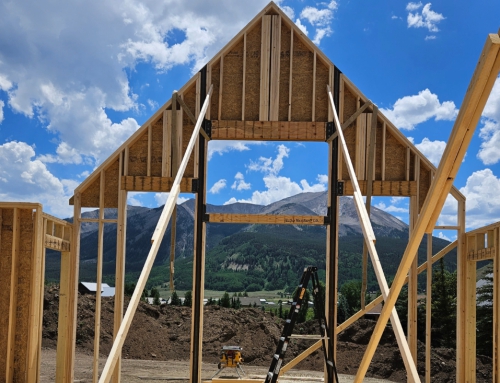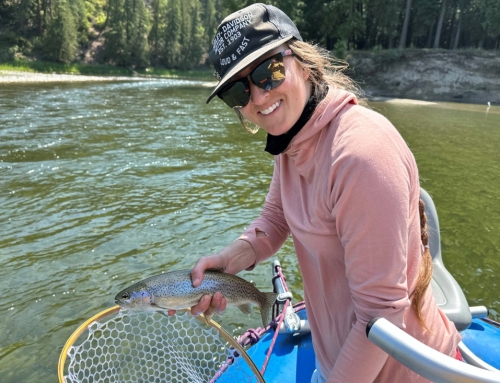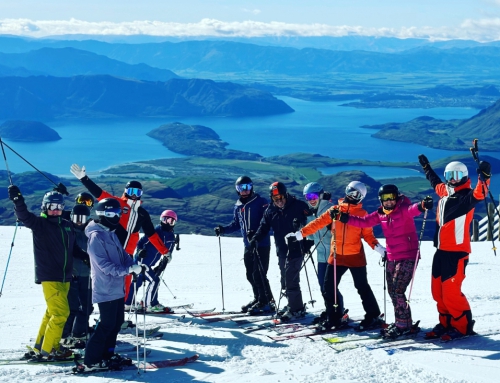How Fall Conference Will Inform and Enhance the Work of PSIA-AASI Members
Fall Conference 2019 took place in Breckenridge, Colorado, last week, with the overarching objective of finalizing the Strategic Alignment Initiative by refining Learning Outcomes (LO) and Performance Guides (PG) for all discipline standards for national consistency.
Attendees were provided with a 40-page booklet, titled Fall Conference 2019 Outcomes, which in part stated that:
“This document provides a summary of the three skill areas that support the Learning Connection Model (LCM) and the associated structures for interpreting and applying the Learning Connection Model including the Quality Assurance and Enhancement (QAE) cycle throughout the Association… The intention is that this document – or a similar version of it will create the foundation for the new National Standards for PSIA-AASI.”
The work is the result of an ongoing partnership between PSIA-AASI and the Penn State Department of Recreation, Park and Tourism Management, who in 2018 formally committed to a collaborative relationship to develop curriculum, research and opportunities for study.
Here, PSIA-AASI Director of Education Dave Schuiling and Pete Allison, associate professor of values and experiential learning at Penn State and Director of the Kurt Hahn Consortium for Values and Experiential Learning, discuss how this initiative will inform and qualify the skills of professional snowsports instructors.
How will this work impact and enhance the professional experience for PSIA-AASI members and schools?
DS: The skillsets measured and valued by resorts that qualify great instruction are better recognized within the snowsports industry and other career pathways. PSIA-AASI will be credit rated to show these skills as relevant and necessary for a variety of jobs. The quality of the learning experiences to drive consistency is due to collaborative efforts to work together to build the learning outcomes.
PA: The work we did at FC was focused on a clearer expression of the various different qualifications that PSIA-AASI offers. Different discipline groups are at different stages in the process. The impact of this will be a much greater degree of consistency across disciplines and divisions and sharing of resources to enhance the quality of snowsports education across the country. One aspect of this is the use of a shared vocabulary of learning outcomes, learning experiences, assessment activities and assessment criteria. A second impact will be the teaching and people skills components, which will have the same learning outcomes and assessment criteria across all divisions. Highlighting the importance of these two skills sets across the association will set PSIA-AASI members apart as not only great athletes in their respective disciplines, but also great educators.
What has it taken to get to this point?
DS: Three Fall Conferences in the making and countless conference calls and focus group face-to-face meetings have contributed to the enormous amount of work that has been generated by our volunteer education leadership. Partnering with Penn State has provided outside validation of the work to align for greater consistency. Having this outside voice has been instrumental for change management.
PA: A LOT of work! Over the last three years, all of the task forces and the Educational Leadership Council have worked relentlessly to put together the documentation and to really focus in on the essential skills needed to be a great snowsports educator. This work has taken great commitment from a passionate community of volunteers who have been a joy to work with. This work will pay off for years to come as we introduce new National Standards and associated supporting resources. Over the coming years we will see a great evolution in the way in which snowsports are taught, and even greater impact on all membership.
Where and when will instructors begin to incorporate this into the work they do?
PA: Over the next two years we will see a steady roll out of information through multiple PSIA-AASI channels. This will allow people to start to use these resources and to think about their work in different and inspiring ways. The roll out will start with teaching, people and alpine technical skills, with other disciplines following closely behind. The roll out will be steady and an evolution rather than a revolution.
DS: Members will start to feel the changes this season as learning experiences through training are implemented, and education staff work with learning outcomes and train to the performance guides. As discipline groups are ready, national standards developed in the learning connection, will be proposed as early as spring of 2020. Implementation of some components will find there way into certification processes during the 2020-2021 season.
Why is this initiative so timely for the association right now?
PA: As the association moves more and more to a one team approach, and focusing on communication, collaboration and consolidation as a strategic priority, this project helps to bring the educational practices of the association together and to enhance them through sharing of good practices.
DS: A true national system developed through collaboration across all divisions is long overdue. Initiatives to grow snowsports education, and especially the next generation of snow sliders, begs this level of consistency and validation in the skills necessary for the future workforce within or outside of the snowsports industry. The time is now to leave a significant impact on education and professional development.
For instructors and students alike, how does this improve everyone’s time on snow?
DS: The learning connection speaks to well-balanced development in people, teaching and technical skills. As snowpros work on professional development and are validated through certifications built on the learning connection framework, the ultimate outcome is a learning experience that is fulfilling, inspirational and contagious. As we all strive to be better, we share in creating lifelong adventures through education.
PA: This project gives is a shared vocabulary and a framework for thinking about and guiding our everyday practices which will improve the clarity and quality of snowsports lessons at all levels.

